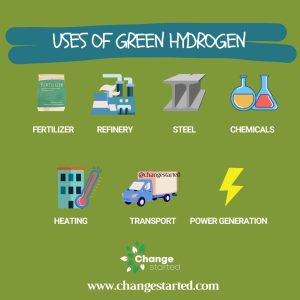According to a Nuvama report, solar photovoltaic (PV) costs in India are 16-44 percent lower, and wind energy costs are 17-40 percent lower, compared to global averages. Thus, making India a formidable player in new energy markets, especially green ammonia and green hydrogen.
As per a NITI Aayog report, India’s green ammonia production costs could be approximately 29 percent lower than China’s and 43 percent lower than Australia’s by 2030.
One of the major drivers for bringing green energy prices lower is the increasing domestic solar module manufacturing capabilities spurred by the Government’s initiatives.
In Budget announcements made in 2022, the government introduced the Production Linked Incentive Scheme (PLI) to support domestic manufacturing of high-efficiency solar modules.
Approximately Rs 24,000 crore (US$ 3.2 bn) was allocated to boost India’s solar energy needs and reduce dependence on China’s imports.
Furthermore, to combat climate change and become a net-zero economy, India has set a target of generating 500 GW of electricity from renewable energy sources by 2030 of which 280 GW is planned to be achieved through solar energy.
As of June 2024, the country’s cumulative installed solar capacity has exceeded 87 GW with 15 GW added in the first six months of 2024, an increase of over 282% compared to the first half of 2023.
The rapid solar expansion along with the PLI incentive has encouraged several Indian companies to set domestic manufacturing capacity for end-to-end PWCM (polysilicon, wafers, cells, and modules) and explore green energy opportunities.
In 2021, India’s largest private-sector company Reliance Industries committed an investment of over $10 billion (Rs 75,000 crores) over the next three years towards the green energy business including developing an integrated solar photovoltaic module factory for the solar energy sector.
Similarly, Adani Group plans to invest Rs 2 lakh crore by 2030 to achieve 40 GW of renewable energy generation capacity including facilities to manufacture electrolyzers for making green hydrogen, wind power turbines, and solar panels.
Other India-based solar manufacturers like Waaree Energies and Borosil Renewables are also working with their plans.
Solar module pricing has been going down since the last decade due to technological innovations, now spurred by India’s PLI rollouts and supportive regulatory policies has enhanced the country’s green energy capabilities.
Green Hydrogen (hydrogen made using renewable energy) can be a game-changer in achieving climate goals as it is made by leveraging renewable energy and is used in several applications including transportation and manufacturing.

The current method of producing (grey) hydrogen is through fossil fuels which produces greenhouse gas emissions. As the price of producing solar energy lowers, the cost of making Green Hydrogen will also reduce, thereby increasing its affordability and viability.
Some of India’s leading companies are targeting to bring down the cost of green hydrogen to US$1/kg which is about one-fourth of current global rates.
To further boost domestic green hydrogen and green ammonia potential in India, the government launched the National Green Hydrogen Mission. The objective of this policy is to encourage research through collaborations and provide financial and non-financial incentives.
While a lot of work is still needed, these developments are highly encouraging and promising.
India’s successes in producing affordable green ammonia and green hydrogen can be a game-changer in not only the domestic market but also the global energy market.






Add comment